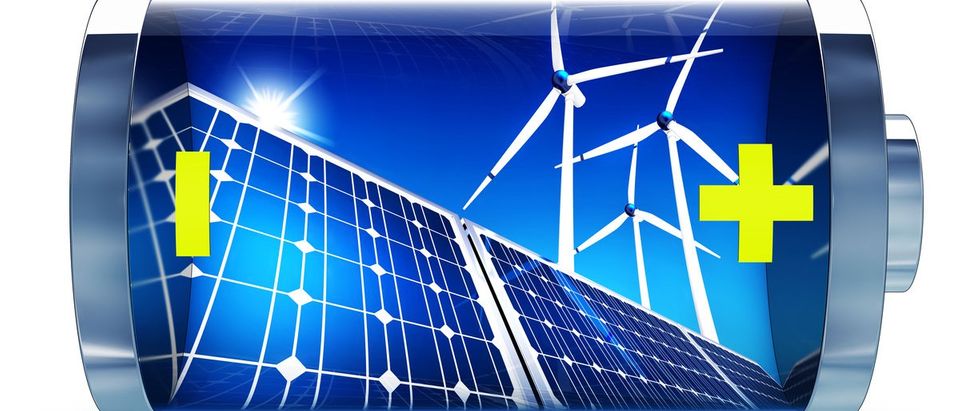Storing enough electricity in batteries to support wind and solar power faces enormous physical problems, which could make it economically impossible, according to a study published Tuesday by chemists at Texas A&M.
The study found that when electrons combine with the lithium ions in a battery, they distort the electronic structure of the device, essentially trapping unused energy in the battery, causing it to degrade rapidly. The research means that it may be inherently impossible to store large amounts of electricity cost effectively in a battery.
“Fundamentally, when you have a battery, every time you use it, it starts to die a little bit,” Dr. Sarbajit Banerjee, a chemistry professor at Texas A&M, wrote in a press statement. “The more you use it, the more it dies. Eventually, it becomes unusable. Theoretically speaking, you expect a certain performance from a battery, and you rarely ever get there. People have been at a loss to understand all the factors that contribute to this lack of full capacity.”
Banerjee’s team used one of the world’s most powerful soft X-ray microscopes to actually watch the “traffic jam” of ions that makes batteries an inherently inefficient way of storing electricity.
“Cost-effective battery storage is the holy grail for wind and solar power advocates because they know that intermittency is a serious problem with these sources,” Travis Fisher, an economist at the Institute for Energy Research, told The Daily Caller News Foundation. “128 years ago, we solved the physics of battery storage to fix the intermittency problem–however, the fact remains that no one has solved the economics of it. Still, we have many states and now the federal government mandating high levels of renewable generation, essentially gambling the grid on a breakthrough in battery technology that is at best uncertain. Banking on the hopes and dreams of the national environmental lobby and special interest groups is not sound energy policy.”
America has less than 1 percent of the energy storage capacity necessary for wind and solar to meet the green goal of “100 percent green energy,” according to an analysis of federal data published last Saturday by The Daily Caller News Foundation.
Without large-scale energy storage, the power grid needs demand for energy to exactly match supply to function. Power demand is relatively predictable, and conventional power plans, like nuclear plants and natural gas, can adjust output accordingly. Solar and wind power, however, can’t easily adjust output and provide power unpredictably relative to conventional power sources. The power they do provide generally doesn’t coincide with the times when power is most needed either. Peak energy demand also occurs in the evenings, when solar power is going offline. Without about 150 times more capacity to store power for later use, wind and solar simply won’t work.
On an especially cloudy or windless day, the electrical grid can’t supply enough power from solar or wind alone. Wind and solar also run the risk of producing too much power, which can overload and fry the power grid. This is why electrical companies will occasionally pay consumers to take electricity. Germany paid wind farms $548 million to switch off last year to avoid grid damage. Adding conventional power plants which only provide power at intermittent and unpredictable times makes the power grid more fragile.
This issue makes storing power with any batter inherently uneconomical for consumers. A Tesla Powerwall capable of powering a home costs $7,340 to buy, but a conservative analysis estimates that it will only save its owner a maximum of $1.06 a day.Such a battery would take almost 40 years, or roughly four times its warranty period, to pay for itself, according to analysis performed by the Institute for Energy Research. Tesla only offers five- to 10-year warranties on its Powerwalls, and predicts they will last for only 15 years.
The lack of energy storage capacity is one of the reasons that solar and wind power still only accounted for 0.6 and 4.7 percent of the electricity created in America during 2015, according to the Energy Information Administration.
Send tips to andrew@
All content created by the Daily Caller News Foundation, an independent and nonpartisan newswire service, is available without charge to any legitimate news publisher that can provide a large audience. All republished articles must include our logo, our reporter’s byline and their DCNF affiliation. For any questions about our guidelines or partnering with us, please contact licensing@dailycallernewsfoundation.org.












